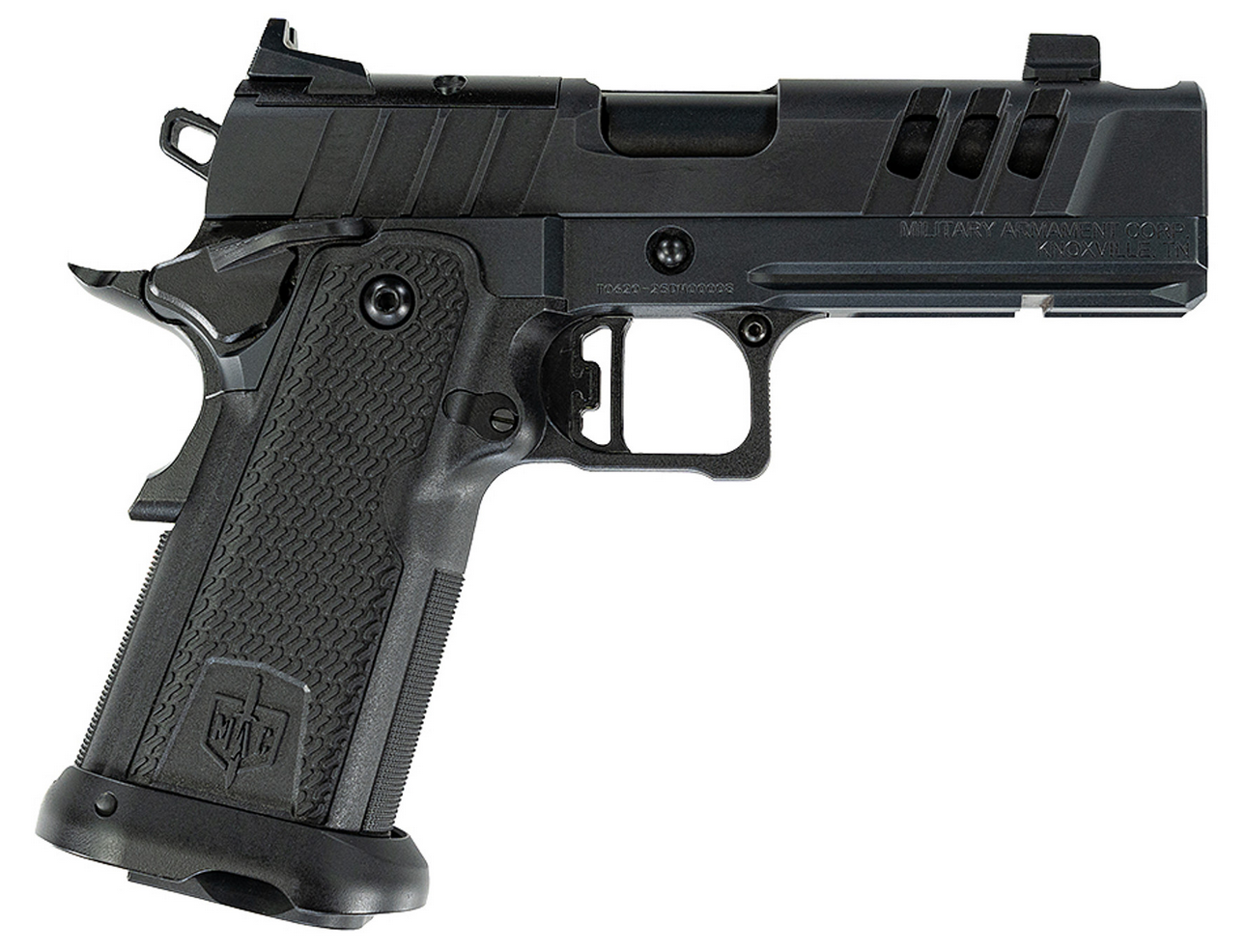Smith & Wesson M&P Victory 38 S&W US Property Marked
No reviews have been written for this product.
Description
The Smith & Wesson Model 10, previously known as the Smith & Wesson .38 Hand Ejector Model of 1899, the Smith & Wesson Military & Police or the Smith & Wesson Victory Model, is a K-frame revolver of worldwide popularity. In production since 1899, the Model 10 is a six-shot, 38 Special, double-action revolver with fixed sights. Some 6,000,000 of the type have been produced over the years, making it the most popular handgun of the 20th century.
In 1899, the United States Army and Navy placed orders with Smith & Wesson for two to three thousand Model 1899 Hand Ejector revolvers chambered for the M1892 38 Long Colt U.S. Service Cartridge. With this order, the Hand Ejector Model became known as the .38 Military and Police model. That same year, in response to reports from military sources serving in the Philippines on the relative ineffectiveness of the new cartridge, Smith & Wesson began offering the Military & Police in a new chambering, .38 S&W Special (a.k.a. .38 Special), a slightly elongated version of the .38 Long Colt cartridge with greater bullet weight (158 grains) and powder charge increased from 18 to 21 grains of gunpowder.
In 1902, the .38 Military & Police (2nd Model) was introduced and featured substantial changes. These included major modification and simplification of the internal lockwork and the addition of a locking underlug on the barrel to engage the previously free-standing ejector rod. Serial numbers for the Military & Police ranged from number 1 in the series to 20,975. Most of the early M&P revolvers chambered in .38 Special appear to have been sold to the civilian market. By 1904, S&W was offering the .38 M&P with a rounded or square butt, and 4-, 5-, and 6.5-inch barrels.
World War II
The S&W M&P military revolvers produced from 1942 to 1944 had serial numbers with a "V" prefix, and were known as the Smith & Wesson Victory Model. Early Victory Models did not always have the V prefix. During World War II 590,305 of these revolvers were supplied to the United Kingdom, Canada, Australia, New Zealand, and South Africa under the Lend-Lease program, chambered in the British 38/200 caliber already in use in the Enfield No 2 MK I Revolver and the Webley MK IV Revolver. Most Victory Models sent to Britain were fitted with 4-inch or 5-inch barrels, although a few early versions had 6-inch barrels. The 5-inch barrel was standard production after 4 April 1942. The Office of Strategic Services (OSS) supplied thousands of these revolvers to resistance forces. Thousands of Victory Model revolvers remained in United States Army inventories following World War II for arming foreign military and security personnel.
An additional 352,315 Victory Model revolvers chambered in the well-known and popular 38 Special cartridge were used by United States forces during World War II. The Victory Model was a standard-issue sidearm for United States Navy and Marine Corps aircrews, and was also used by security guards at factories and defense installations throughout the United States during the war. Although the latter personnel could use conventional lead bullets, Remington Arms manufactured REM UMC 38 SPL headstamped cartridges loaded with a 158 gr (10.2 g) full metal jacket bullet for military use in overseas combat zones. Tracer ammunition was manufactured for signaling purposes.
Initial production of 65,000 4-inch-barreled revolvers for Navy aircrew bypassed standard procurement procedures, and quality suffered without traditional inspection procedures. Quality improved when Army ordnance inspectors became involved in early 1942, and the design was modified in 1945 to include an improved hammer block after a sailor was killed by a loaded revolver discharging when accidentally dropped onto a steel deck. Many aircrew preferred to carry the revolver rather than the heavier M1911 pistol. Pilots often preferred a shoulder holster in the confined space of a cockpit, but a hip holster was also available for security personnel.
Some of these revolvers remained in service well into the 1990s with units of the United States Armed Forces, including the United States Air Force and the Coast Guard. Until the introduction of the Beretta M9 9mm pistol in 1990, U.S. Army helicopter crew members and female military police were equipped with .38 caliber Victory Model revolvers. The Victory Model remained in use with Air National Guard tanker and transport crews as late as Operation Desert Storm in 1991, and with United States Navy security personnel until 1995.
The finish on Victory Models was typically a sandblasted and parkerized finish, which is noticeably different from the higher-quality blue or nickel/chrome finishes usually found on commercial M&P/Model 10 revolvers. Other distinguishing features of the Victory Model revolver are the lanyard loop at the bottom of the grip frame, and the use of smooth (rather than checkered) walnut grip panels. However some early models did use a checkered grip, most notably the pre-1942 manufacture.

































.jpg)

